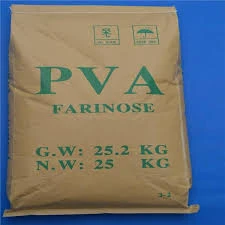HPMC in Powder Wall Putty A Comprehensive Overview
Hydroxypropyl Methylcellulose (HPMC) is a versatile cellulose ether that has found its niche in various construction applications, particularly in powder wall putty formulations. Its unique properties make it an indispensable additive, enhancing both the performance of the putty and the overall quality of wall surfaces.
What is HPMC?
HPMC is a derivative of natural cellulose, modified to improve its solubility and rheological properties. It is a white, odorless powder that is non-toxic and environmentally friendly. One of its most significant features is its ability to retain water, ensuring that materials remain workable during the application process. This characteristic is crucial for powder wall putty, which requires optimal consistency for effective application and smooth finishing.
Importance of HPMC in Powder Wall Putty
1. Water Retention One of the primary functions of HPMC in wall putty is its excellent water retention capability. This attribute ensures that the putty maintains a suitable level of moisture during application, preventing premature drying. As a result, it allows for better adhesion to surfaces and more extended workability, which is essential for achieving a uniform finish.
2. Improved Workability HPMC enhances the overall workability of powder wall putty. With the addition of HPMC, the putty becomes easier to spread and apply. This is particularly important for professionals looking to achieve a flawless finish on various substrates, including cement, plaster, and brick.
3. Thickening Agent HPMC acts as a thickening agent that helps in achieving the desired viscosity of the putty. This viscosity control is vital for ensuring that the putty does not sag or run after application. It provides the necessary body to the mixture, facilitating better smoothing and leveling on walls.
hpmc powder wall putty

4. Adhesion Improvement The inclusion of HPMC in wall putty formulations enhances adhesion properties, allowing the putty to bond more effectively with surfaces. This improved adhesion leads to reduced chances of cracking and peeling, which are common issues in less fortified mixtures.
5. Reduced Shrinkage HPMC can help in minimizing shrinkage during the drying process. By retaining moisture, it slows down the drying rate, allowing for a more gradual curing process. This is particularly beneficial in environments with extreme temperatures or low humidity, where rapid drying can lead to surface defects.
Environmental Considerations
HPMC is a biodegradable compound, which makes it a favorable choice in environmentally conscious construction practices. The shift towards sustainable building materials has prompted many manufacturers to incorporate HPMC into their formulations, as it supports energy efficiency and reduces the carbon footprint of construction projects.
Conclusion
The incorporation of Hydroxypropyl Methylcellulose in powder wall putty elevates the product’s performance by enhancing workability, adhesion, water retention, and reducing shrinkage. As the construction industry becomes increasingly focused on sustainability and quality, HPMC serves as a reliable choice for manufacturers and contractors. Its attributes not only improve the application process but also ensure durable and aesthetically pleasing results on wall surfaces.
In summary, HPMC has established itself as a crucial component in the formulation of powder wall putty, contributing to improved application techniques, sustainable practices, and high-quality wall finishes. As the demand for efficient and eco-friendly building materials continues to rise, HPMC is poised to play a significant role in the future of construction.
-
The Versatility of Industrial Additives: Mhec, Hpmc, And Wall Putty SolutionsNewsMar.28,2025
-
The Importance of HPMC in Modern IndustriesNewsMar.28,2025
-
Partnering with Reliable Manufacturers for Optimal ResultsNewsMar.28,2025
-
Enhancing Construction Performance with Redispersible Polymer PowdersNewsMar.28,2025
-
Enhancing Construction and Household Products with Advanced AdditivesNewsMar.28,2025
-
Building Strong Foundations with Key Construction MaterialsNewsMar.28,2025






